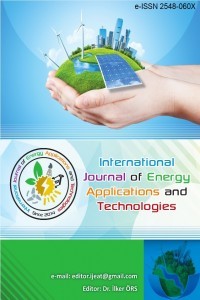Overview a nearly zero energy building
Overview a nearly zero energy building
Nearly Zero Energy Building, Renewable Energy Source, High Performance Building Cost-Optimal, Energy-Efficiency,
___
- Bisegna, Fabio, Luca Evangelisti, Paola Gori, Claudia Guattari, and Benedetta Mattoni. 2018. From Efficient to Sustainable and Zero Energy Consumption Buildings: Green Buildings Rating Systems.
- Congedo, Paolo Maria, Cristina Baglivo, Delia D’Agostino, and Ilaria Zacà. 2015. “Cost-Optimal Design for Nearly Zero Energy Office Buildings Located in Warm Climates.” Energy 91(244):967–82. doi: 10.1016/j.energy.2015.08.078.
- Karlessi, Theoni, Nikos Kampelis, Denia Kolokotsa, Mat Santamouris, Laura Standardi, D. Isidori, and C. Cristalli. 2017. “The Concept of Smart and NZEB Buildings and the Integrated Design Approach.” Procedia Engineering 180:1316–25. doi: 10.1016/j.proeng.2017.04.294.
- EU 244/2012 Commission Delegated Regulation No244/2012 of 16. Supplementing directive 2010/31/EU of the European Parliament and of the Council on the energy performance of buildings by establishing a comparative methodology framework for calculating cost-optimal levels of minimum energy performance requirements for buildings and building elements. January 2012.
- D’Agostino, Delia, and Livio Mazzarella. 2018. “What Is a Nearly Zero Energy Building? Overview, Implementation and Comparison of Definitions.” Journal of Building Engineering 21:37. doi: 10.1016/j.jobe.2018.10.019.
- U.S. Energy Information Administration (EIA)
- Giuseppe, Elisa Di. 2013. Nearly Zero Energy Buildings and Proliferation of Microorganisms.
- Union, European. 2010. “DIRECTIVE 2010/31/EU OF THE EUROPEAN PARLIAMENT AND OF THE COUNCIL of 19 May 2010 on the Energy Performance of Buildings (Recast).” Official Journal of the European Union L 153/13(30):619.
- D’agostino, Delia, and Paolo Zangheri. 2016. Development of the NZEBs Concept in Member States: Towards Nearly Zero Energy Buildings in Europe.
- Wang, Ran, Wei Feng, Lan Wang, and Shilei Lu. 2021. “A Comprehensive Evaluation of Zero Energy Buildings in Cold Regions: Actual Performance and Key Technologies of Cases from China, the US, and the European Union.” Energy 215:118992. doi: 10.1016/j.energy.2020.118992.
- Kurnitski, Jarek. 2013. Cost Optimal and Nearly Zero-Energy Buildings (NZEB) Definitions, Calculation Principles and Case Studies.
- Yayın Aralığı: Yılda 2 Sayı
- Başlangıç: 2014
- Yayıncı: İlker ÖRS
Yousif Mustafa Sadeq AL-KHDHAİRİ, Ahmet Mete VURAL
Ragıp YILDIRIM, Kazım KUMAŞ, Ali Özhan AKYÜZ
Investigation of the improvement of Sivas-Kangal lignites liquefaction product yields
Aydan AKSOĞAN KORKMAZ, İsmail BENTLİ
The influences of gasoline and diesel fuel additive types
Overview a nearly zero energy building
Solar power plant generation forecasting using NARX neural network model: A case study
